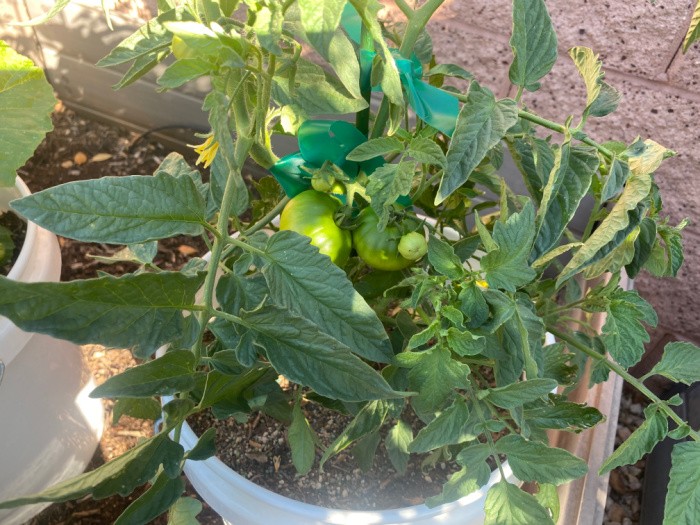
For many gardeners, tomatoes are one of the main reasons they fell in love with gardening in the first place. I, too, know from experience just how rewarding and satisfying it is every time I get to enjoy a slice of tomato that I grew in my very own garden. Here are some of the top gardening tips for growing tomatoes.
If it’s your first ever growing tomatoes, or you’re just hoping for better results this time, I’d be more than happy to share what I know with you. These are some of the top gardening tips for growing tomatoes that you ought to know. This is where I buy my garden seeds: SeedsNow
Top Gardening Tips for Growing Tomatoes
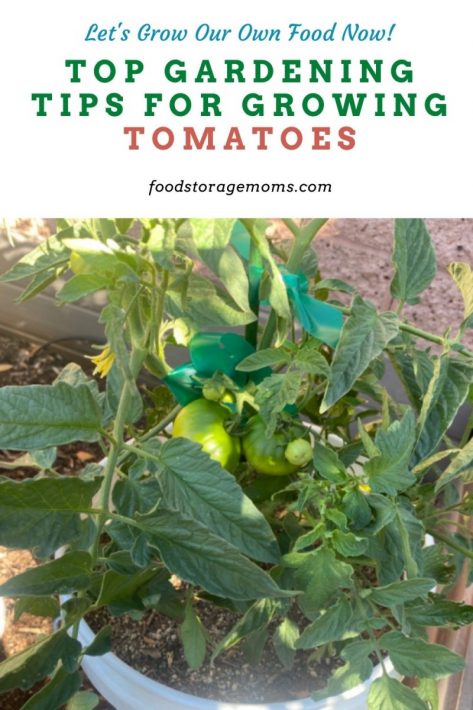
Wait for the Right Time to Plant
Just because you’ve had a few days of sunshine and temperatures have finally warmed up, doesn’t mean it’s the right time to plant your tomatoes. For tomato plants, you must be patient and wait until all threats of frost are out of the way. However, if you’re getting antsy like most gardeners, you can consider starting your seedlings indoors to give them a head start.
Make Sure Your Garden Soil is Up to Snuff
Your garden soil plays a huge role in how much success you will have as a gardener. Good soil must be well-draining, full of nutrients, and have a light and fluffy texture. Without one of these variables, your tomato plants will have difficulty growing to their full potential. If you are not satisfied with what you currently have to work with, here are some tips on improving your garden soil.
Plant them Deep
You want your tomato plants to be robust, with a healthy root system that runs deep. Do this by planting your tomato plants deeper than you would expect. Only the top few leaves should be showing when properly planted. Go ahead and pinch off the lower branches and cover them with soil. This is an essential tip for growing tomatoes. In case you missed this post, How to Garden With 5-Gallon Buckets
Provide Plenty of Sunlight
Tomato plants enjoy lots of sunshine. You will need to plant them in a location that receives full sunlight, which is about 6 to 8 hours each day. If there’s not enough sunlight in your backyard for growing tomatoes, you may want to consider planting them in pots or containers that you can move around in your yard. You can also grow them indoors under a consistent light source.
Yellow Flowers But Zero Fruit?
It could be because they are not pollinating due to a lack of a slight breeze or from bees. I have used this product and it works. Tomato Blossom Set
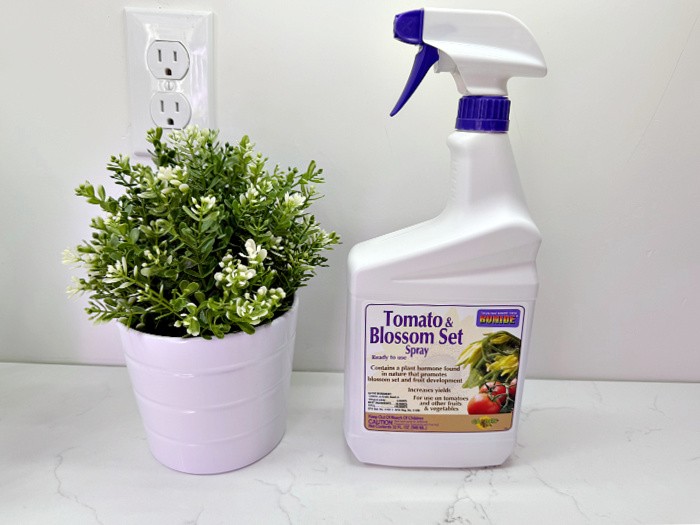
Hand Pollinate
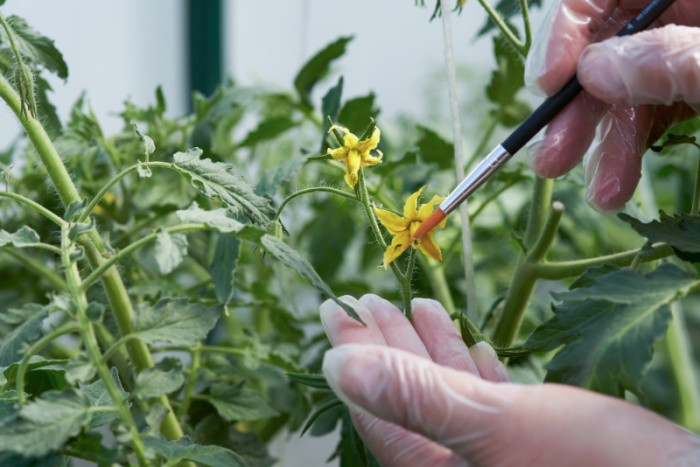
You only need a paintbrush if you want to pollinate your squash or tomatoes. If you need to hand-pollinate because you aren’t seeing any fruit develop, here is something you may want to try. You do this by removing the male flower blossoms (male blossoms don’t have fruit behind them).
They produce pollen, leaving the center covered in pollen to collect with the brush. Use a “brush” to apply the pollen you collected to the center of the female flower. This works for tomatoes, squash, melons, and cucumbers every time.
I’ve also found that having good flowering companion plants nearby helps with pollination. If you can attract bees or other pollinators to the flowers, your pollination problems may be solved.
Stake Your Plants
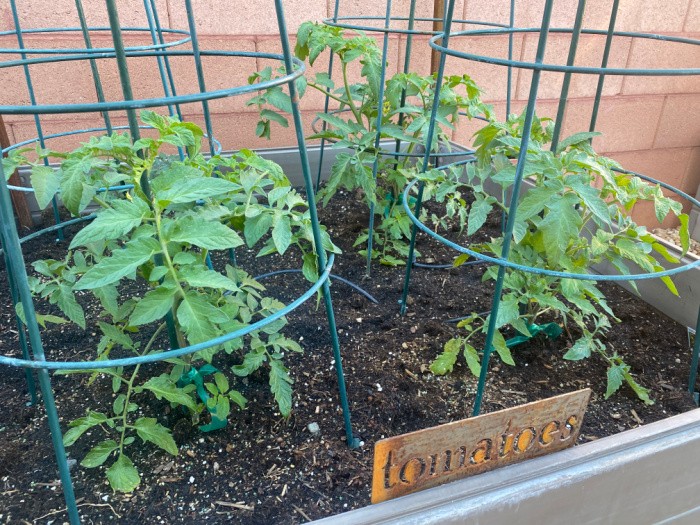
Once your tomatoes start to grow, it will only be a matter of time before the plant can no longer support its weight. This can cause the plant’s stem to break, or the fruit will grow on the ground, leading to disease and rotting.
Staking your tomato plants as they grow is the best way to prevent this. To keep up with them, you may even need to do this as often as once or twice a week.
I use some narrow-gauge garden poles I buy at my local nursery. I tie the central plant stem to the poles with green stretchable plant tape. Try to tie them such that the plant has some room to grow without damaging the branches. Don’t tie too tightly since the plant should slide up the tape as it grows. Green Stretchable Garden Tape and the 36-inch Garden Poles (these last for years) and Sturdy Tomato Cages
Also, note that I use some heavy-duty tomato cages. These are a little hard to find, but I buy mine from Glover Nursery in West Jordan, Utah. They have lasted for years and help support those branches as the tomatoes grow to full size. My plants often grow to nearly my height in my 18″ deep grow boxes/raised planters. I don’t want my tomatoes to rest on the ground as they mature. You’ll love these cages!
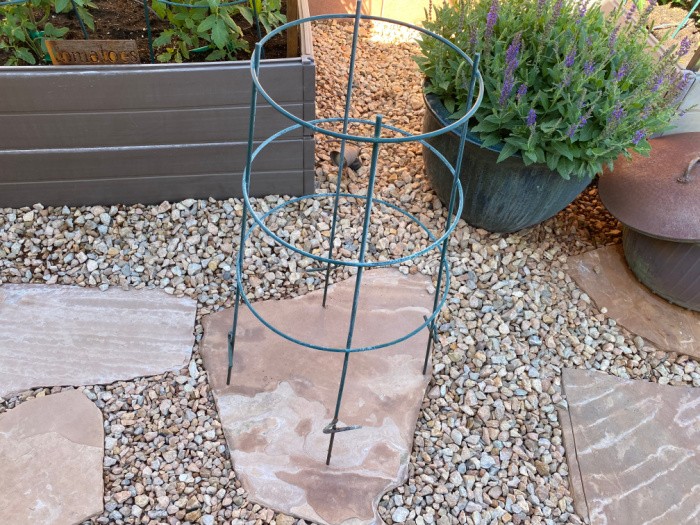
Give them Calcium
Unfortunately, you won’t know if your tomato plant has a calcium deficiency until after you pick its fruit. You’ll wind up with tomatoes that are rotten on the bottom. Yuck! You can avoid blossom end rot by adding calcium to your plants.
You can do this by sprinkling powdered milk around the base of the stem, and don’t hesitate to do this sooner rather than later. If you have questions about growing them in your particular location, don’t be afraid to inquire at your local nursery or stores like Lowe’s or Home Depot if they have a functioning garden center. They can prove very helpful.
Blossom Rot
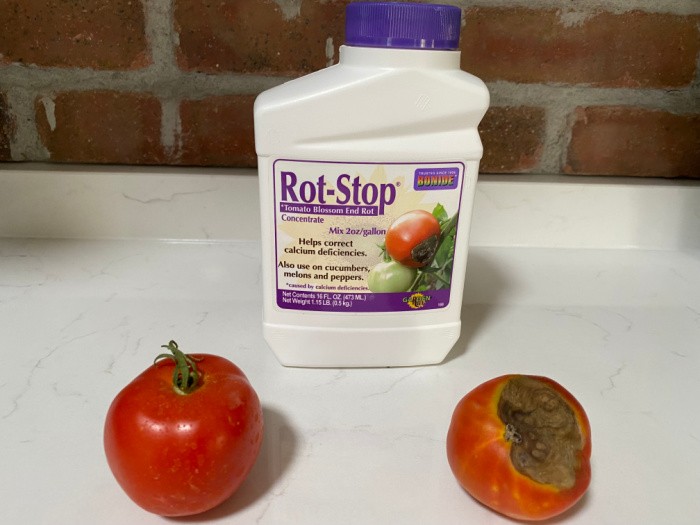
This is tomato blossom rot. I picked this one from a pot I’m growing tomatoes in. You can still save the plant. It’s caused by insufficient calcium in the tissue of the tomato. You need to maintain moisture in the soil throughout the season. You can add crushed egg shells or use the product shown above. Bonide Blossom Rot Concentrate
Add Mulch
Mulch does your garden several favors, which is why it is highly recommended. It helps the soil around your plants retain moisture while keeping weeds down and away from them. It also keeps the soil from getting on your plants when watering them, which can help prevent them from exposure to possible diseases.
Water Your Plants Regularly
When your seedlings are first starting, they must be watered daily, and sometimes twice if temperatures are already getting hot. Once they mature, they’ll need about 1 to 1 ½ inches of water each week. If you’re wondering if it’s time for more water, stick your finger into the ground next to the plant. If the soil is dry before it reaches your first knuckle, you’ll know it’s time to water.
While tomato plants need plenty of water, be aware that it is possible to overwater them too. It can be easy to do so because overwatering looks a lot like underwatering. Your plants may start shriveling up, and their fruit may crack. Watering them earlier in the day is also recommended.
Fertilize with Just the Right Amount
When you fertilize your tomato plants, they will thrive, but you must be careful to use a balanced approach. Over-fertilizing will give your plants too much nitrogen, which can lead to bushier plants but fewer tomatoes. Fertilize Your Plants
If you notice yellow leaves on your plants, they’re not receiving enough nitrogen, and you will need to increase their feeding. As a general rule of thumb, tomato plants should be fertilized about once every month.
Trim and Prune Foliage
If left unkempt, tomato plants will become a bushy mess, and your tomato crops will suffer. That’s why pruning your tomato plants regularly is so important; this will also allow them to reach harvest sooner. This should be done to the older leaves once the plant is around 3 feet tall. Most gardeners prefer to prune back the foliage and leaves closest to the ground to avoid diseases and bugs.
Don’t Turn a Blind Eye to Pests and Diseases
Checking your tomato plants on a regular basis is critical to their health. If you notice any signs of disease or evidence that something is munching on their leaves, don’t let it go. Take care of it immediately. Here are the types of pests and diseases you may encounter and how to treat them organically.
Cheryl-Master Gardener Tip
When your tomato plants reach 2 1/2 feet tall, remove the bottom leaves far enough to allow air to circulate and keep the leaves from being watered. Choose the best 3-4 strongest stems and train them up, pruning out the rest carefully. Tie these up onto poles to spread out.
This will bring in lots of sunshine and provide great pollination. I was taught this method at one of my Master Gardener classes. It was an excellent class, and I have used this method ever since. My plants can reach over 5 feet and produce huge crops. Adding more air to circulate sets the blossoms for fruit. Toward the end of the season, I prune the top so everything below can ripen. Make sure to add calcium as they start to produce!
Final Word
Growing tomato plants does require a bit of love and attention, but you and your family will be rewarded with delicious-tasting fruit all summer long. Mark and I really enjoy BLT sandwiches during the summer—they’re so delicious! If you’re a gardener and have had success in the past growing tomatoes, what are some other helpful tips that beginners would benefit from? May God bless this world, Linda.
Copyright Images: Pollinate Tomatoes by Hand AdobeStock_856279053 By ROMAN DZIUBALO
Please Check Out What To Plant Each Month:
- What To Plant In January
- What To Plant In February
- What To Plant In March
- What To Plant In April
- What To Plant In May
- What To Plant In June
- What To Plant In July
- What To Plant In August
- What To Plant In September
- What To Plant In October
The post Top Gardening Tips for Growing Tomatoes appeared first on Food Storage Moms.
from Food Storage Moms
No comments:
Post a Comment